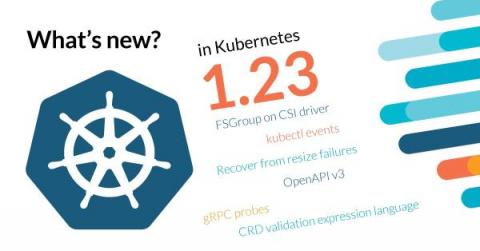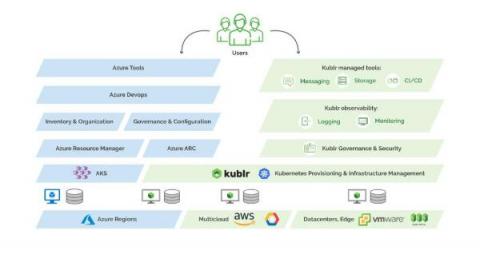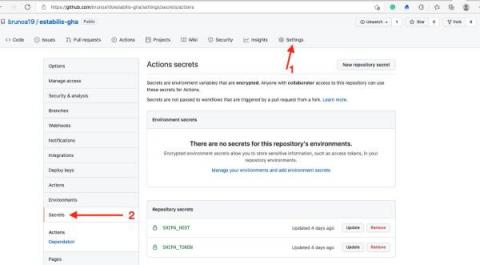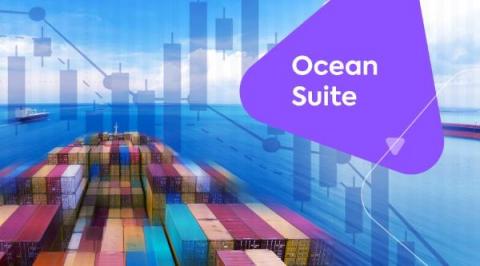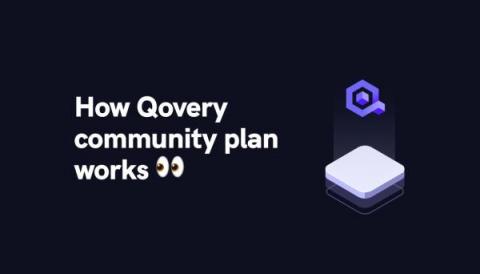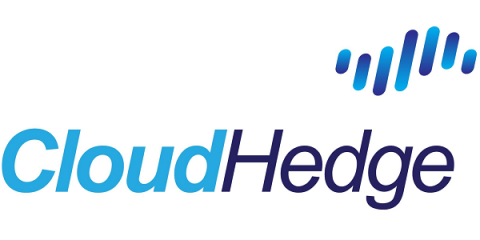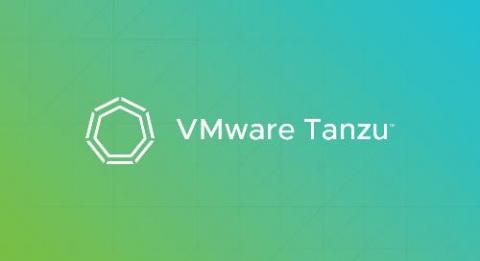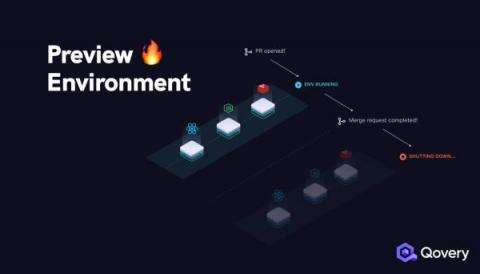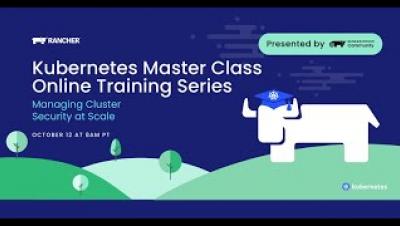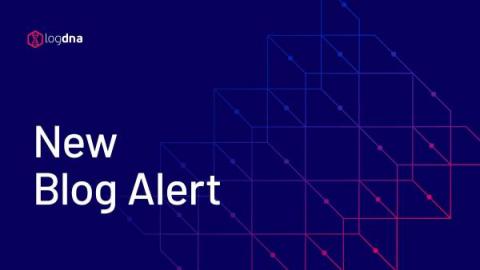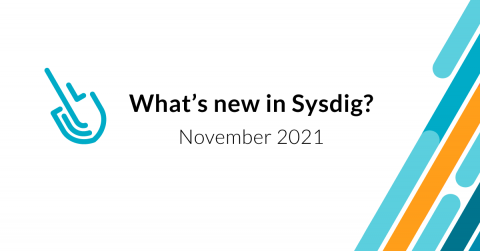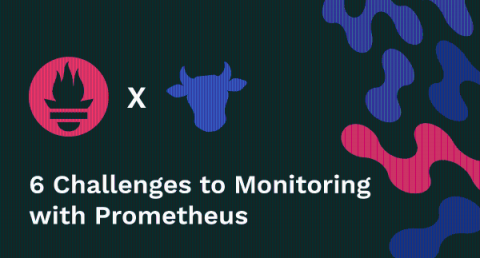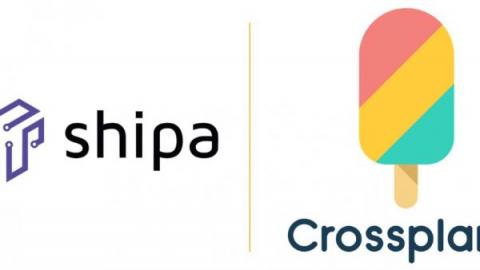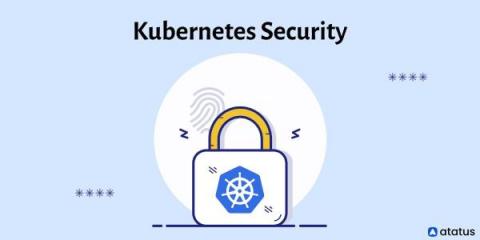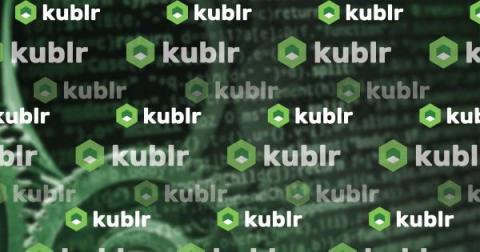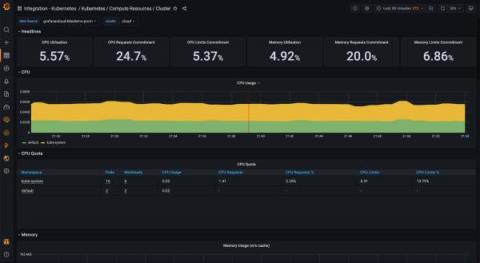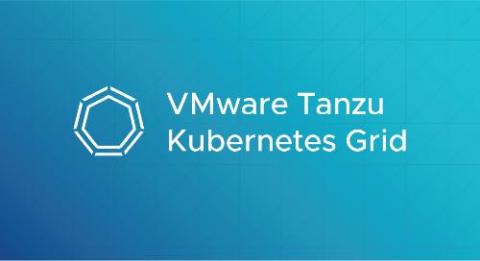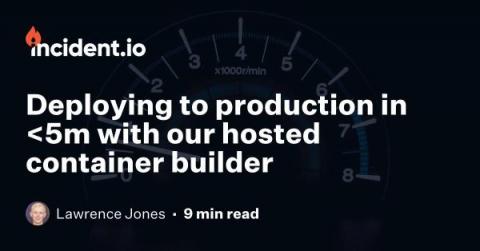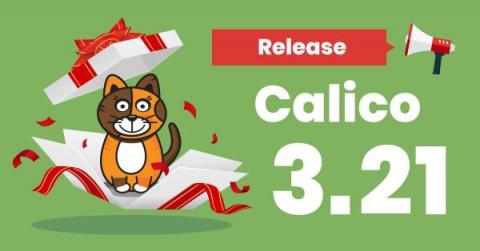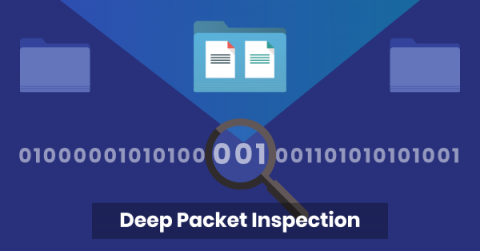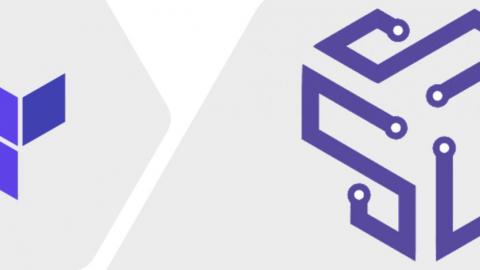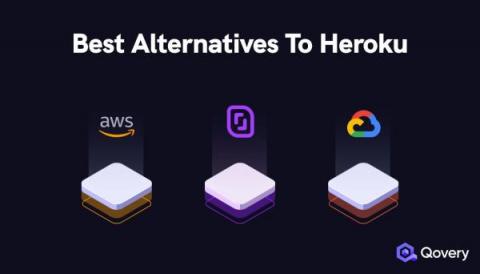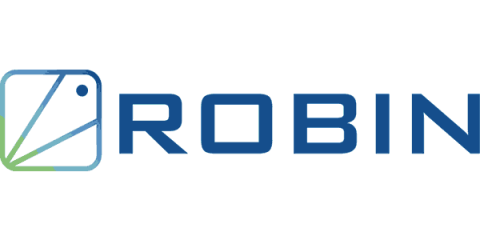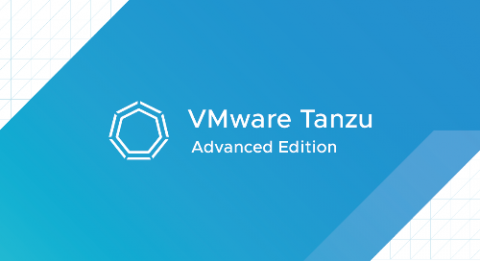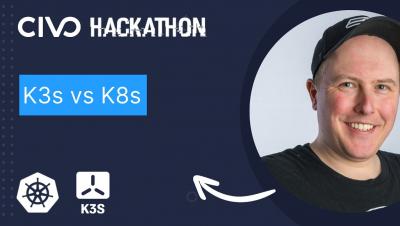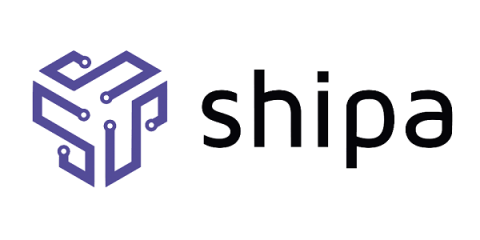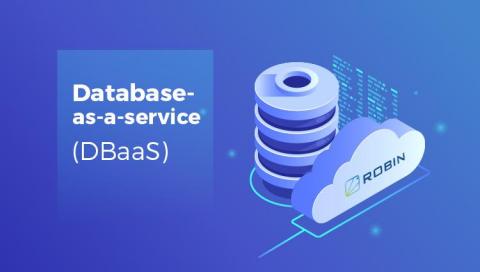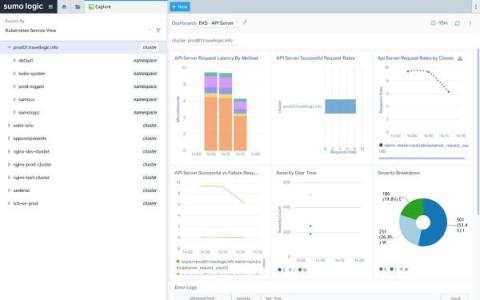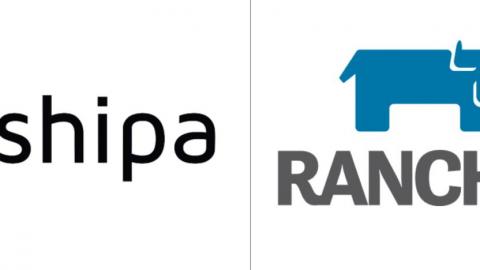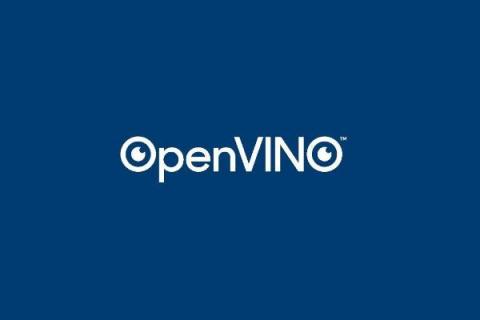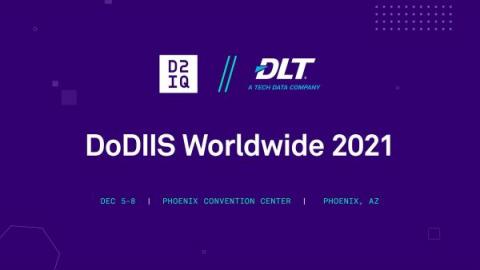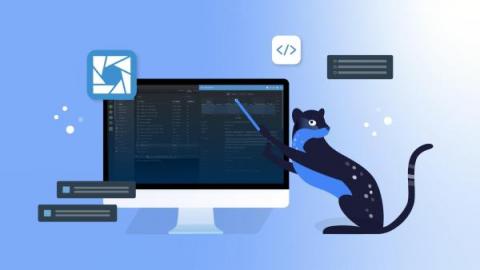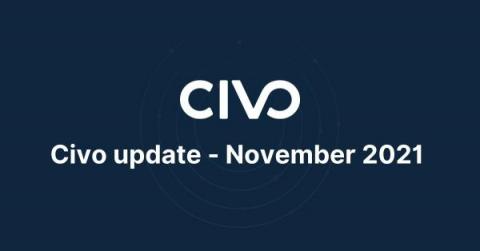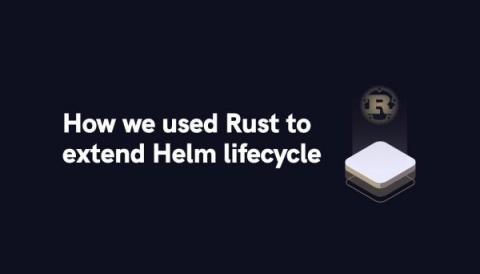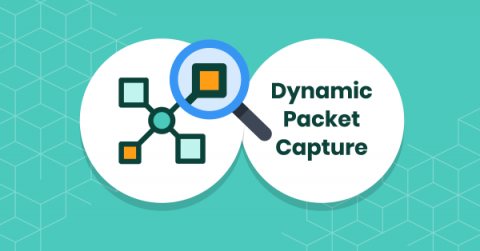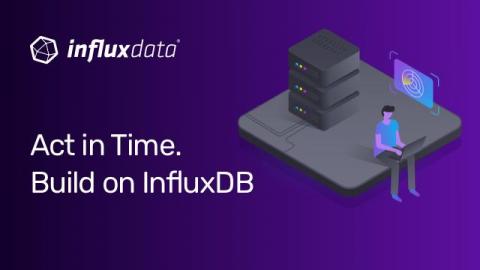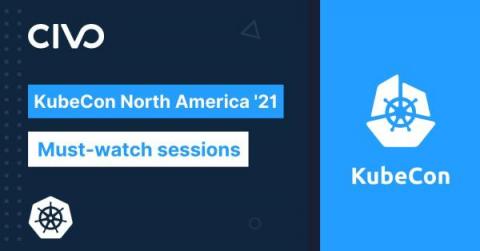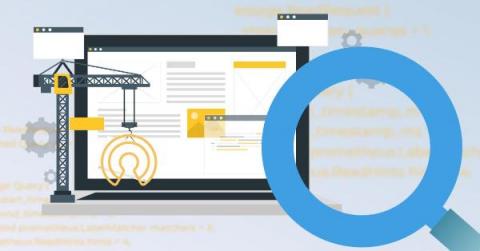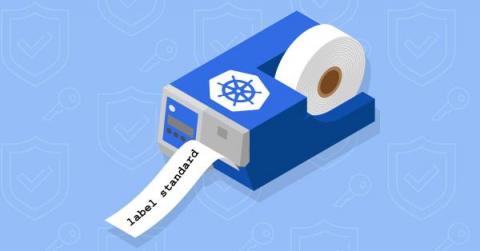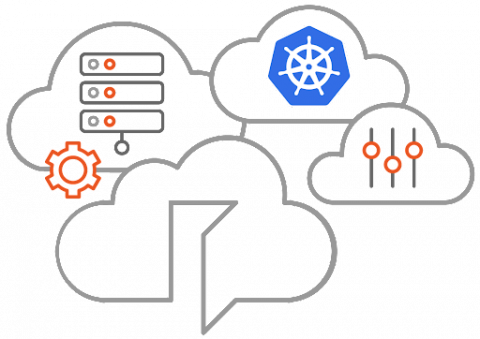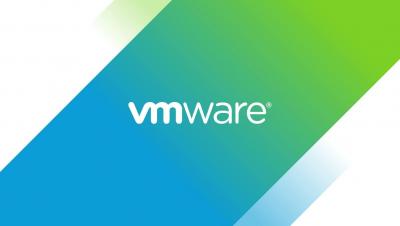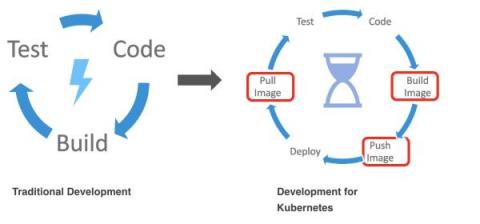Operations | Monitoring | ITSM | DevOps | Cloud
November 2021
Kubernetes 1.23 - What's new?
Kubernetes 1.23 is about to be released, and it comes packed with novelties! Where do we begin? This release brings 45 enhancements, on par with the 56 in Kubernetes 1.22 and the 50 in Kubernetes 1.21. Of those 45 enhancements, 11 are graduating to Stable, a whopping 15 are existing features that keep improving, and 19 are completely new. The new features included in this version are generally small, but really welcomed. Like the kubectl events command, support for OpenAPI v3, or gRPC probes.
Tanzu Talk: What is the Application Transformer for VMware Tanzu?
New Ideas On How To Install Epinio
Epinio, the application development engine for Kubernetes, is meant to take you from app to URL in one step. It does that by either applying buildpacks to your app or using a pre-built docker image. Epinio installs into any Kubernetes cluster to bring your application from source code to deployment and allow for developers and operators to work better together.
Tanzu Talk: Two Tools to Modernize Legacy Apps - the VMware App Transformer & App Navigator
Kublr Completes Microsoft Validation Program for Azure Arc-enabled Kubernetes and Azure Arc-enabled Kubernetes for Data Services
Enterprises choose Kublr because our platform is designed to be highly flexible and seamlessly integrate with cloud and services players for easy management of customized Kubernetes stacks.
A Developer focused CI/CD pipeline for Kubernetes
As Kubernetes becomes the key target environment across many organizations, it automatically becomes an essential topic for developers. However, Kubernetes was created for operations and, unless you spend a considerable amount of time learning and specializing yourself, it is still challenging to use. Developers should rather focus on delivering applications instead, and a developer or application-focused platform is needed to enable that.
Private 5G and Private LTE For Communication Service Providers
Introduction to Kubernetes
Control the complexities of containers with the Ocean Suite for Kubernetes
In the relatively short window of time that Kubernetes has been around, it’s rapidly matured as a critical technology foundation for the cloud, and now even applications that were previously thought to be unviable for containers are running with Kubernetes. As companies expand their usage of it, the need to operationalize Kubernetes with automation and optimization is critical to maintaining speed, agility and control in the long-term.
How Qovery Community plan works
Since we launched Qovery in January 2020, we offered free hosting ("Community" plan) for every developer. Providing free hosting was the perfect way to get product feedback and iterate with our users without the cost constraint. As our hosting infrastructure costs have drastically grown within the last 18 months, we had to reinvent our free offer. In a nutshell, we will continue to offer free hosting to involved community members only. Keep reading to know more 👇
CloudHedge Technologies Achieves AWS Migration and Modernization Competency Status
Plano, Texas – 29th November, 2021 – CloudHedge Technologies, Inc, announced today that it has achieved Amazon Web Services (AWS) Migration and Modernization Competency status for AWS Partners. This designation recognizes that CloudHedge’s App Modernization platform—OmniDeq™ powered by R6Ai™— has demonstrated technical proficiency and proven customer success automating and accelerating customer application migration and modernization journeys.
Application Transformer for VMware Tanzu Is Now in Tech Preview
Enterprises worldwide are embracing innovations such as the cloud to solve their digital needs, but many face challenges with workload migration and application modernization. One way organizations can ease their application modernization journeys is to adopt the 5 R’s framework—rehost, replatform, refactor, retain, and retire—allowing them to choose the right migration strategy for their specific environment.
Preview Environment in Early Access
This is the most exciting feature we launched since Qovery v2 has been released - the Preview Environment feature!
Kubernetes Master Class GitOps and Fleet Multi Cluster CD with EKS, GKE and AKS
Tanzu Talk: the best kubernetes executive copy and uni-cloud strategy
Kubernetes Master Class Security & Observability feat. Tigera
Kubernetes Master Class Managing Cluster Security at Scale
Kubernetes 1.23 rc testing with MicroK8s
Today, Kubernetes 1.23 release candidate was made available upstream for testing and experimentation. General availability is planned for December 7th, so now is the time to report back any issues or bugs. Developers, DevOps and open source software enthusiasts can try out the latest features using MicroK8s. MicroK8s is a lightweight, CNCF-certified Kubernetes distribution with a streamlined UX.
5 Things Developers Need to Know About Kubernetes Management
Kubernetes management can be daunting for developers who don’t have specialized understanding of the orchestration technology. Learning Kubernetes takes practice and time, a precious commodity for devs who are under pressure to deliver new applications. This post provides direction on what you need to know and what you can skip to take advantage of Kubernetes. Let’s start with five things you need to know.
What's new in Sysdig - November 2021
Welcome to a new update of “What’s new in Sysdig.” Happy All Saints’/Souls’ Day! Happy International Pianist Day! Happy Thanksgiving! Happy Diwali! Glad alla helgons dag. The “What’s new in Sysdig” blog has been rotated to a new team, and this month, Peter Andersson is responsible for the publishing. Thanks to Chris Kranz for an excellent job compiling these articles earlier.
Turbocharging AKS networking with Calico eBPF
A single Kubernetes cluster expends a small percentage of its total available assigned resources on delivering in-cluster networking. We don’t have to be satisfied with this, though—achieving the lowest possible overhead can provide significant cost savings and performance improvements if you are running network-intensive workloads.
6 Challenges to Monitoring with Prometheus
If GitHub stars are any indication, Prometheus has been doubling in usage year over year since its inception. While at Moogsoft we love Prometheus as the metrics foundation of our observability platform, there were some challenges to overcome to make it the rock-solid piece of our stack it is today.
Crossplane and Shipa 101 - Your First Crossplane Abstraction
Kubernetes is viewed as one of the great equalizers between development and operations teams. Simply write a manifest and the declarative power of Kubernetes is off to fulfill your desired state. Kubernetes is certainly pluggable and has the ability to be extended / opinions being swapped internally. As any IT organization can tell you, even with Kubernetes there is a lot of integration work, and several parts of the stack such as IaC have been left outside of Kubernetes.
A Blueprint for Enterprise-Grade Kubernetes Deployments
Kubernetes Security: 9 Best Practices for Keeping It Safe
Kubernetes dominates the container orchestration market in every way. According to the latest State of Kubernetes and Container Security study, 88% of enterprises utilise Kubernetes to manage a portion of their container workloads. Kubernetes and other orchestration systems have given software deployment and management a new level of robustness and customization. They also brought attention to the current security landscape's shortcomings.
Visualizing K8s & OpenShift CPU+Memory Risks to Performance & Cost
How we manage CI sensitive data for our Open Source deployment Engine
Making an Open Source Software with sensitive data and dozens of external integrations is a real challenge, here are feedbacks and tradeoffs we've made.
What is Kubernetes?
To understand what Kubernetes (K8s) is, you need to understand the technological developments that preceded it. In this article, you will learn what K8s is, how it evolved and why you should care.
A 3-step guide to troubleshooting and visualizing Kubernetes with Grafana Cloud
Back in May, we announced the Kubernetes integration to help users easily monitor and alert on core Kubernetes cluster metrics using the Grafana Agent, our lightweight observability data collector optimized for sending metric, log, and trace data to Grafana Cloud. Since then, we’ve made some improvements to help our customers go even further.
It Works for Me!
VMware Tanzu Compliance Updates Support US Federal Agencies
Kubernetes has become an ever-larger target for workloads across all industries. The public sector, in particular, experiences several hurdles in achieving effective utilization of this relatively new technology. Of particular concern for the public sector in the United States is the Federal Information Processing Standard (FIPS).
Challenges maintaining Prometheus LTS
In this article, we’ll cover the three main challenges you may face when maintaining your own Prometheus LTS solution. In the beginning, Prometheus claimed that it wasn’t a long-term metrics storage, the expected outcome was that somebody would eventually create that long-term storage (LTS) for Prometheus metrics. Currently, there are several open-source projects to provide long-term storage (Prometheus LTS). These community projects are ahead of the rest: Cortex, Thanos, and M3.
Cloud Resource Optimization Subscription Service
Deploying to production in <5m with our hosted container builder
Fast build times are great, which is why we aim for less than 5m between merging a PR and getting it into production. Not only is waiting on builds a waste of developer time — and an annoying concentration breaker — the speed at which you can deploy new changes has an impact on your shipping velocity. Put simply, you can ship faster and with more confidence when deploying a follow-up fix is a simple, quick change.
What's New in Calico v3.21
It’s that time again; we’re really happy to announce Calico v3.21! As always, thank you to everyone who contributed to this release! For detailed release notes, please go here. Alongside the usual-but-essential bug fixes and other improvements, there are some big new improvements to be aware of.
Real-time threat response for Kubernetes workloads, using threat intelligence feeds and deep packet inspection
Cloud-native transformations come with many security and troubleshooting challenges. Real-time intrusion detection and the prevention of continuously evolving threats is challenging for cloud-native applications in Kubernetes. Due to the ephemeral nature of pods, it is difficult to determine source or destination endpoints and limit their blast radius. Traditional perimeter-based firewalls are not ideal fit for Kubernetes and containers.
Terraform and Shipa - Better Together - Webinar
Gain real-time, end-to-end visibility across your containers with the AppDynamics Prometheus Extension
Gain full-stack observability across your containerized applications and services with AppDynamics and Amazon Managed Service for Prometheus (AMP).
Civo hackathon winners announcement
A Simple Guide to Taming the Beast That Is Kubernetes
Terraform and Shipa 101 - Your First Terraform and Shipa Cloud Integration
Leveraging Terraform, which is an infrastructure-as-code platform, is a great match. Using both technologies together is becoming more mature and there have been some great pieces around the art of the possible between the two platforms. Though if you are unfamiliar with both, this guide will get you up and started with both Terraform and Shipa together. In this example will be using Terraform to create all of the necessary Shipa resources to deploy to a Kubernetes cluster.
Demystifying the complexity of cloud-native 5G network functions deployment using Robin CNP
Best Heroku Alternatives for 2022
So you’ve just created a new project and want to start distributing it, but you still don’t know how to manage its deployment. Then there’s the monitoring, network request, and a lot of other problems related to modern apps. At the same time, you want to avoid working directly with AWS due to its intricacy.
[Webinar] 5 Things to Consider When Migrating Databases to Kubernetes with Komodor & Ondat
Edging Closer to 5G with Automation
5G use cases and applications require unprecedented mobility, security, low-latency and tighter integration between wireless and mission-critical applications. To enable these expectations, intelligent infrastructure and automation technologies are being increasingly adopted worldwide. This is proving to be the fundamental backbone of successful, competitive business that is thriving to deliver industry 4.0 and 5G applications worldwide.
VMware Tanzu Advanced Quarterly Update: Driving DevOps Metrics that Matter
It is imperative for DevOps success that operations teams provide a good developer experience and that developers have what they need for productive workflows. When this is done automatically and seamlessly, teams can get code to production faster. However, it’s not enough to get code committed quickly. That code must also be compliant and secure. Developers should not find out at the last minute that they used a noncompliant package leading to hours of re-work.
Intro to Kubernetes monitoring - Civo Hackathon
Robin.io wins Automation Solution Award | FutureNet World Awards 2021
Intro to Civo platform - Civo Hackathon
Intro to Kubernetes and Containerd - Civo Hackathon
K3s vs K8s - Civo Hackathon
Shipa Cloud Updates
I’m sure most of us have heard this saying before, and if you are in the DevOps space, I’m sure this is a scenario that you deal with daily. Most of us started even before we even had all these nice terms, such as DevOps, SREs, DevSecOps, and so many others, when we were all Sys Admins.
Tanzu Talk: Kubernetes is not for developers...?
Sysdig & SUSE: Security & Visibility for SUSE Rancher
Securing a cloud-native environment, such as SUSE Rancher, requires unique considerations. New abstractions like containers, plus the dynamic nature of a Kubernetes orchestrated environment can hamper visibility, especially for legacy tools that aren’t designed for containers and cloud. To help, Sysdig and SUSE have launched a SUSE One Partner Solution Stack designed to not only showcase our joint solution, but also to provide easy ways for you to get started.
Overview: See the VMware Tanzu Application Platform DevSecOps Experience
Kubernetes and the Enterprise
Building your Database-as-a-service for MySQL workloads on Robin
Database-as-a-service (DBaaS) is a cloud computing service model that enables DBAs and developers to quickly deploy and manage enterprise-grade databases without the need for setting up physical hardware, installing software and configuring databases for performance.
Why and how to monitor AWS EKS
New Ocean feature - minimum nodes per Virtual Node Group
Spot by NetApp’s Ocean continually optimizes a Kubernetes cluster’s data plane. When Ocean identifies nodes that aren’t being fully utilized, it simulates various bin packing scenarios. Once a more efficient layout is identified, Ocean reschedules pods, and then gracefully terminates the underutilized nodes. Ocean’s continuous optimization of cluster infrastructure saves your organization money and is better for planet Earth!
Shipa Now in the SUSE Rancher Partner Marketplace
Shipa Now in the SUSE Rancher Partner Marketplace
We are very excited to announce that you can now install Shipa from the SUSE Rancher Marketplace. Installing Shipa On-Prem can now be done with a click-to-install inside of SUSE Rancher. Follow this quick guide to get you up and started with Shipa if you are leveraging SUSE Rancher.
Intel and Canonical to secure containers software supply chain
Intel and Canonical collaborate to build and publish OpenVINO™ container images based on the Ubuntu ecosystem. This work aims to provide trusted, secure, and developer-friendly container images for AI/ML applications in many industries.
Ketch Now in the Civo Cloud Marketplace - Getting Started
In Studio NMG - Private 5G for CSPs
Top Three Challenges in Building New Kubernetes Ecosystems: Public Sector Innovation
Worldwide container management revenue will grow strongly from a small base of $465.8 million in 2020, to reach $944 million in 2024, according to a new forecast from Gartner, Inc. Among the various subsegments, public cloud container orchestration and serverless container offerings will experience the most significant growth. The benefit of Kubernetes is that it makes it possible to manage and deploy modern applications with increased speed and efficiency.
Kubernetes Application-Level API
The Kubernetes API is the front end of the Kubernetes control plane and is how users can interact with their clusters. In essence, it’s the interface used to manage, create, and configure the cluster and the state of objects. Using a standard API, Kubernetes allowed teams to focus on constructs and consume infrastructure across different providers.
Infrastructure as Code, part 1: create a Kubernetes cluster with Terraform
This series shows you how to get started with infrastructure as code (IaC). The goal is to help developers build a strong understanding of IaC through tutorials and code examples. Infrastructure as Code (IaC) is an integral part of modern continuous integration pipelines. It is the process of managing and provisioning cloud and IT resources using machine readable definition files.
Overview: See the VMware Tanzu Application Platform DevSecOps Experience
What is Kubernetes Lens?
As a DevOps Engineer, one day you’re performing magic in the terminal, settling clusters, and feeling like a god. On some other days, you feel like a total fraud and scam. Errors and bugs appear from everywhere, you don’t know where to start, and you don’t know where to look. Sadly, days like this come far too often. To be more specific, what often causes these bad days is none other than Kubernetes itself.
The Astronomical scope of Private 5G - and how to unlock its massive benefits
As enterprises prepare to deploy Industry 4.0 applications, they are increasingly adopting intelligent infrastructure and newer automation technologies. With aggressive digitalization comes an insatiable appetite for improved performance and new services. Enterprises and customers are adopting the current 5th Generation (5G) mobile network as quickly as it becomes available.
VMware Tanzu Advanced: A Day in the Life of Cody the Developer and Alana the Operator
D2iQ Kubernetes Platform Demo - DKP 2.X
Tanzu Talk: Machine Learning in Kubernetes with GPUs
Mario vs. Steve: What Video Games Can Teach Us about Monitoring vs. Observability
Credit: Unsplash What is monitoring? What is observability? Monitoring shows you how a Kubernetes environment and all of its layers are operating. Observability, on the other hand, is a measure of how well internal states of a system can be inferred from knowledge of its external outputs.
Civo update - November 2021
In case you missed the big news, after almost two years in beta and early access phases, Civo is now general availability! Find out what this means for Civo and the future of the platform over at our blog. We've also launched the first-ever Civo Hackathon! This is an initiative to bring together developers, architects, experts, and students from across the globe to develop innovative Kubernetes projects on Civo.
feedback on how we built qovery a cloud deployment platform for growing startups replay 2021 11 04
Install kubernetes easily & for free with the VMware Tanzu Community Edition
How we extended Helm lifecycle with Rust
Helm has some limits, discover how we extended functionnalities with Rust.
Five Kubernetes Deployment Best Practices (Part 2)
In our previous post , we focused on tips for making the transition and migration to Kubernetes a smoother, and less painful process. In this post, we’d like to now provide some tips from the operational trenches for future-proofing your Kubernetes operation, after making the move. Kubernetes, as a software-driven system, has many benefits for engineers and DevOps teams to take advantage of.
Four Best Practices to Migrate to Kubernetes (Part 1)
Kubernetes has evolved into the leading platform to build your microservices systems. Given its increased maturity over the past few years as well as the robust ecosystem which has been built around its technology, Kubernetes has become more production-ready than ever. Nevertheless, it still has its own unique set of challenges. In particular, it brings a lot of complexity into play with its adoption.
Fast and simple troubleshooting with GUI-based Dynamic Packet Capture
With the Calico 3.10 release, Dynamic Packet Capture is available in Dynamic Service Graph. This means users who require self-service, live troubleshooting for microservices and Kubernetes workloads can capture and evaluate traffic packets on endpoints without writing a single line of code or using any 3rd-party troubleshooting tools. Users don’t need to learn about or have knowledge of kubectl or YAML to troubleshoot their microservices and Kubernetes cluster.
Docker: Run Telegraf as non-root
The Telegraf 1.20.3 release changed the official Telegraf DockerHub image to no longer run the Telegraf service as root. With this change, the Telegraf service runs with the least amount of privileges in the container to enhance security given the wide extensibility and array of plugins available in Telegraf.
KubeCon North America 2021 roundup
KubeCon/CloudNativeCon North America 2021 was a whirlwind of sessions, talks, panels, bonding, and learning. As it was a hybrid event, Civo was represented both in person at a booth that featured Sophia and David from our North American team, as well as virtually through our online booth and talks. Plus, we made an announcement of the General Availability of Civo Kubernetes at the event!
Why the creators of K3ai use Civo Kubernetes
Open Source for Better Observability
Monitoring cloud-native systems is hard. You’ve got highly distributed apps spanning tens and hundreds of nodes, services and instances. You’ve got additional layers and dimensions—not just bare metal and OS, but also node, pod, namespace, deployment version, Kubernetes’ control plane and more. To make things more interesting, any typical system these days uses many third-party frameworks, whether open source or cloud services.
Learn How to Simplify Kubernetes Performance Management | Pepperdata
Label standard and best practices for Kubernetes security
In this blog post, I will be talking about label standard and best practices for Kubernetes security. This is a common area where I see organizations struggle to define the set of labels required to meet their security requirements. My advice is to always start with a hierarchical security design that is capable of achieving your enterprise security and compliance requirements, then define your label standard in alignment with your design.
Kubernetes Fully Managed: Overcoming CIOs challenges
Kubernetes is everywhere! In the public and private cloud, and from the enterprise to startups, the majority of IT executives around the world have explored Kubernetes, and how it has evolved the way many organisations are developing and deploying their applications. But what is scary about it, and how can organisations better leverage one of the greatest tools in the field while overcoming the biggest challenges facing CIOs when adopting Kubernetes?
How Tanzu Application Platform Improves the Inner Loop for Developers
Recognizing and Removing Friction Points in the Developer Experience on Kubernetes
Kubernetes is a game-changing technological advancement, enabling infrastructure and operations teams to automate application deployment and management at scale. But it has also presented new challenges to developers. As organizations adopt cloud native application paradigms, they face a developer experience crisis due to the complexity of the cloud native ecosystem and a steep learning curve for developing applications for Kubernetes.



